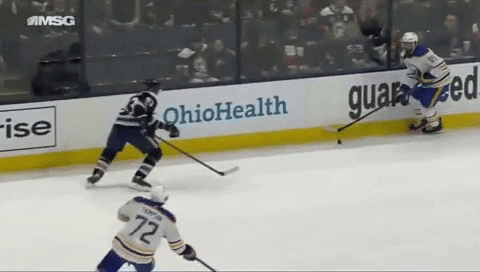One of the first skills youth hockey players are taught is how to shoot a wrist shot.
We think there’s quite a lot of room for improvement. For starters, players who are about to take a wrist shot are, almost by definition, forced to stop skating, and instead begin to glide.
Shooting inside of movement, instead, makes it very difficult for the opposition to defend, for both goalies and defenders alike.
Background
It makes sense that young players are taught a wrist shot. Being less physically developed, this lateral movement is derived from the twisting motion of the body’s core. That shot technique dictates that their feet must stop moving and they will have to shoot off a glide.
As we progress the player’s physical and technical development, we see there are many issues with that type of shot.
There are a few things we’d like to develop towards:
Capitalization of downward, rather than lateral, force
Utilization within a weight transfer, to include multiple muscle groups
Surprising timing for not only the goalie but also the defenders
The best way to accomplish these above items is by shooting in motion.
By shooting in motion, a player is able to fool the goalie and the opposition on the timing of the shot. It’s much easier to beat the defender’s stick, all while generating more shot power.
Shooting in Stride
This type of shot commonly catches goalies off guard since the normal glide that gives away a player’s intentions is skipped.
The release is quicker and more deceptive. A goalie is often late to react and the puck is by then and in the back of the net before their pads fully hit the ice.
Let’s take a look at what this looks like:
View #2
Jumping Into the Shot
Shooting in stride adds a ton of power to the shot as a player engages their entire body into the shot. There is downforce into the ice that transfers the tension into the player’s stick. This flexes the stick as it compresses under the force generated between the player and the ice. The result is a harder, heavier, faster shot.
In the broad category of shooting in stride, jumping into a shot is exactly what it sounds like. The player is getting some air time and jumping/falling with their body weight toward the ice and putting great force onto their stick.
Out of the Crossover
Not only can it be done with a normal forward stride, but this can also easily happen out of a crossover. It’s always a great feeling as a shooter when the goalie is confused like that after you score.
Ultimate Goal
The ideal technique is to time it to have the foot land as soon as the puck is leaving the shooter’s stick. J.T. Miller below is the prime example when it comes to timing the landing.
While these videos of NHL players make this technique look simple and easy, I can assure you, it’s much more difficult than it looks. At first, it will probably feel awkward. As your strength, and timing, develops, you will see improvements into a harder and more deceptive shot.
Further Reading - check out our entire set of shooting technique posts:
Did you enjoy this newsletter?
Help us spread the ideas within and share it with the people you care about








